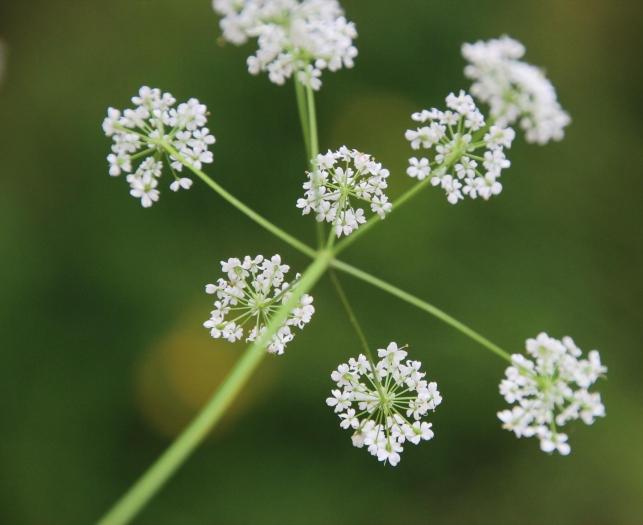Pignut
(Conopodium majus)
Pignut (Conopodium majus)
/
/

Tony Rebelo
CC BY-SA 4.0
Image By:
Tony Rebelo
Recorded By:
Copyright:
CC BY-SA 4.0
Copyright Notice:
Photo by: Tony Rebelo | License Type: CC BY-SA 4.0 | License URL: http://creativecommons.org/licenses/by-sa/4.0/ | Rights Holder: Tony Rebelo | Publisher: iNaturalist | Date Created: 42179 |

























Estimated Native Range
Summary
Conopodium majus, commonly known as Pignut, is a perennial herb native to woodland clearings, grasslands, and hedgerows across western Europe, including the British Isles and extending to Norway. It typically grows to a height of up to 16 inches (40 cm) and features a slender, hollow stem with finely divided, feathery leaves. From May to June, it produces small, inconspicuous white flowers arranged in compound umbels, which are not particularly showy but attract a variety of pollinators. The underground part of the plant forms a rounded tuber that resembles a chestnut and is edible, with a sweet, nutty flavor.
Pignut is valued for its culinary use, particularly among wild food foragers. It is not commonly cultivated in gardens but can be found in naturalistic plantings and wildflower meadows where it contributes to biodiversity. It prefers partial shade but can tolerate full sun if the soil remains moist. Pignut thrives in well-drained, loamy or sandy soils and requires little maintenance once established. There are no popular garden cultivars of this plant, and it is generally not associated with significant diseases or aggressive roots. However, due to its edible tuber, it may be susceptible to foraging by animals if not protected.CC BY-SA 4.0
Pignut is valued for its culinary use, particularly among wild food foragers. It is not commonly cultivated in gardens but can be found in naturalistic plantings and wildflower meadows where it contributes to biodiversity. It prefers partial shade but can tolerate full sun if the soil remains moist. Pignut thrives in well-drained, loamy or sandy soils and requires little maintenance once established. There are no popular garden cultivars of this plant, and it is generally not associated with significant diseases or aggressive roots. However, due to its edible tuber, it may be susceptible to foraging by animals if not protected.CC BY-SA 4.0
Plant Description
- Plant Type: Herb
- Height: 1-1.5 feet
- Width: 0.5-1 feet
- Growth Rate: Moderate
- Flower Color: White
- Flowering Season: Spring
- Leaf Retention: Deciduous
Growth Requirements
- Sun: Full Sun, Part Shade
- Water: Medium
- Drainage: Medium
Common Uses
Edible*Disclaimer: Easyscape's listed plant edibility is for informational use. Always verify the safety and proper identification of any plant before consumption., Low Maintenance
Natural Habitat
Woodland clearings, grasslands, and hedgerows across western Europe, including the British Isles and extending to Norway
Other Names
Common Names: Hognut, Earth Chestnut
Scientific Names: , Conopodium majus, Bunium bulbocastanum, Bunium flexuosum, Carum flexuosum,
GBIF Accepted Name: